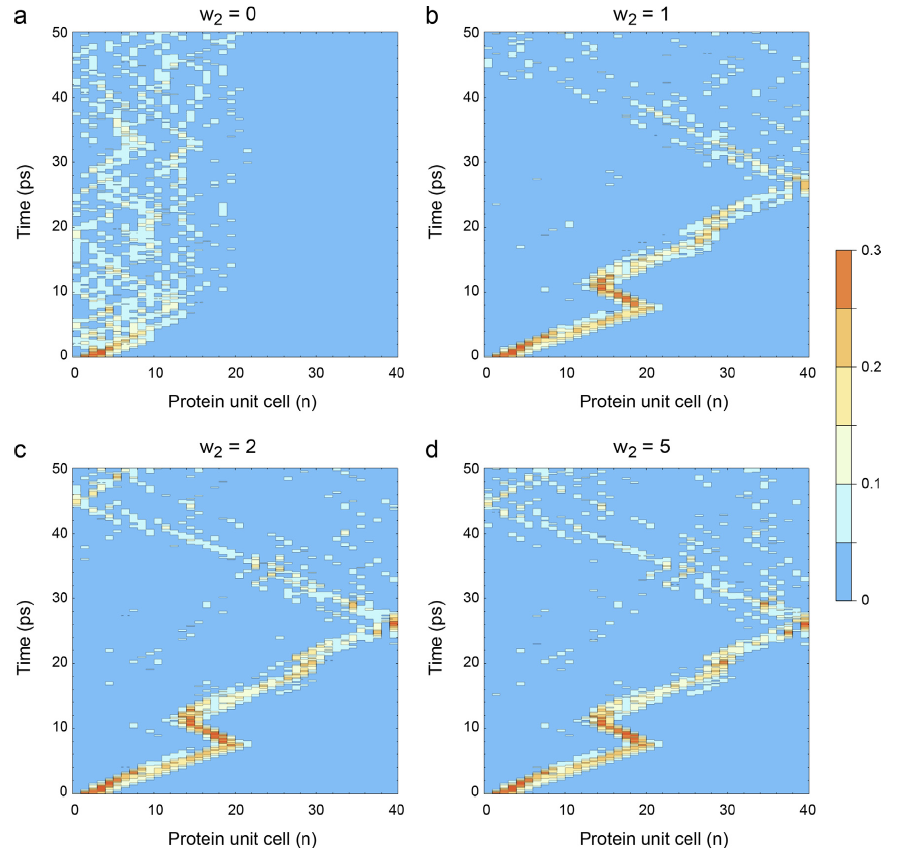Thermal stability of protein solitons
- Details
- Category: News
- Published on Thursday, 03 February 2022 22:00
- Written by Danko Georgiev
- Hits: 1006
Protein α-helices provide an ordered biological environment for energy transport. The nonlinear interaction between amide I excitons and phonons induced in the hydrogen-bonded lattice of peptide groups leads to self-trapping of the amide I energy, thereby creating a soliton that persists at zero temperature. Presence of thermal noise, however, could destabilize the protein soliton and dissipate its energy. To evaluate soliton thermal stability, we have numerically simulated the system of stochastic differential equations that govern the soliton dynamics at physiological temperature.
In our new article published in Chaos, Solitons and Fractals, we simulated the stochastic quantum dynamics of protein solitons and demonstrated that although the thermal noise is detrimental for the single isolated α-helix spine, the cooperative action of three amide I exciton quanta in the full protein α-helix ensures soliton lifetime of over 30 ps, during which the amide I energy could be transported along the entire extent of an 18-nm-long α-helix. Thus, macromolecular protein complexes, which are built up of protein α-helices could harness soliton-assisted energy transport at physiological temperature. Because the hydrolysis of a single adenosine triphosphate molecule is able to initiate three amide I exciton quanta, it is feasible that multiquantal protein solitons subserve a variety of specialized physiological functions in living systems.





